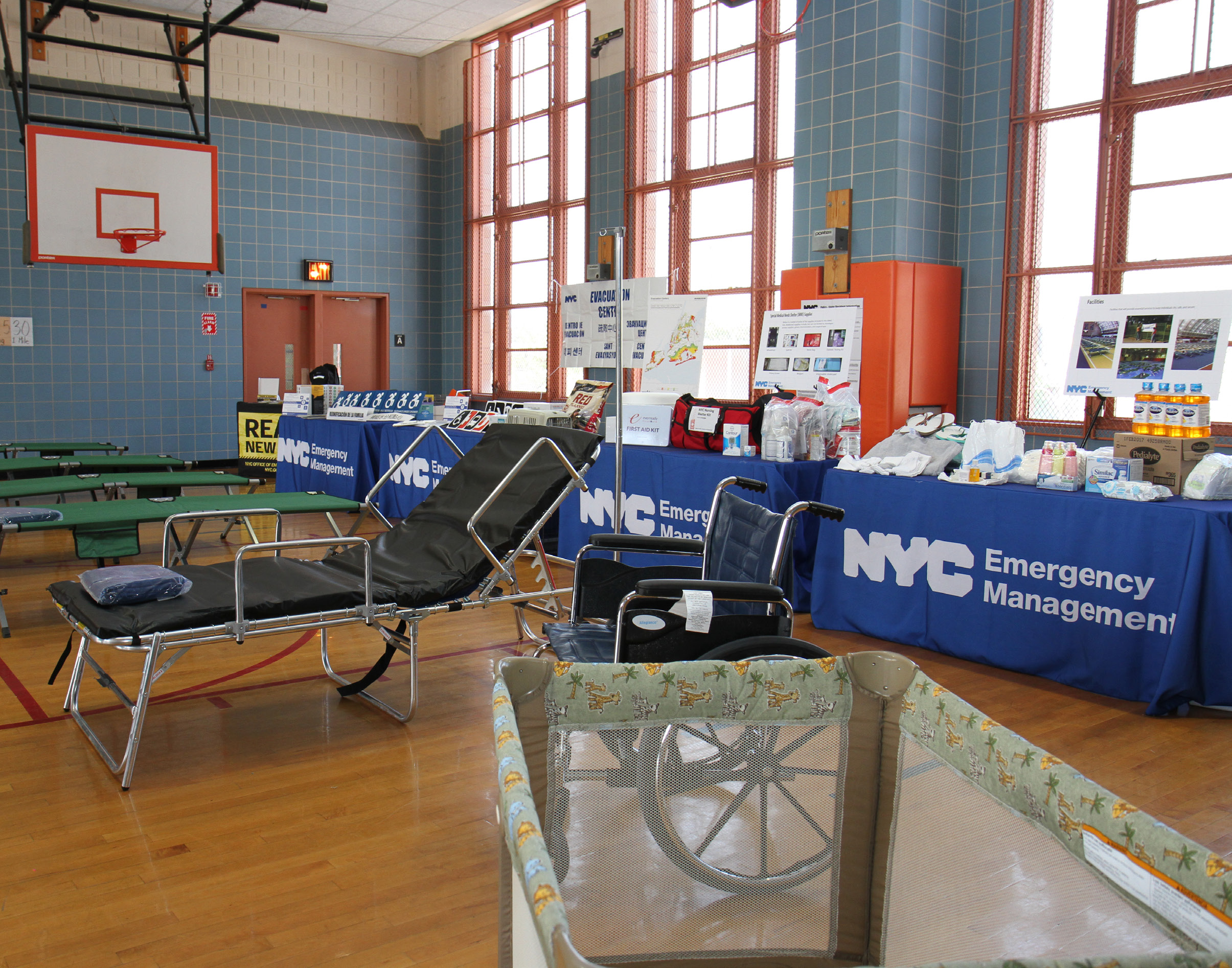IDENTIFY + PREPARE SAFE COMMUNITY SHELTER
| Taking care of each other makes a community resilient. After an emergency, government and private sector assistance may take some time to arrive. Therefore, your community should be considered as the first line of response after a disaster. This strategy focuses on showing how to create a safe space in the community. | Strategy in Action 1. Determine the Location 2. Space Considerations a. Interior b. Structure and Surroundings 3. Equipment 4. Design an Action Plan 5. Practice an Annual Emergency Evacuation Drill |
WHAT YOU NEED TO KNOW
- Use the search engine on the American Red Cross webpage (https://www.redcross.org/cruz-roja.html) for emergency shelters and stay tuned for the news to know when emergency shelters will open.
- You must occupy the community shelter when the location or structure of your home presents a risk to your safety.

Use the community map from Strategy 26 to identify which buildings are in a safe area within the community or its surroundings.
Once you identify these spaces, meet with the person responsible for the space to obtain authorization and discuss its best usage as a community shelter.
If your community surroundings DO NOT offer a safe space for shelter, you must move from your community to your nearest government emergency shelter.
| PUBLIC BUILDINGS
PRIVATE BUILDINGS
|  |
|
A. INTERIOR
| NECESSARY SPACES
| STORAGE
|
B. STRUCTURE AND SURROUNDINGS
- Access: Must be suitable to allow access to aground/air ambulance.
- Verify that the space complies with the local structure code for wind and seismic hazards and risks. (See FEMA P-361 Safe Rooms for Tornadoes and Hurricanes: Guidance for Community and Residential Safe Rooms)
- Solid Waste: Evaluate the distance of the structure where solid waste is headed to protect people's health.
- Energy: Consider a renewable energy supply system that powers a battery bank.
- People with disabilities: Access ramps for people with disabilities. The ramp should be 1:10 and 3' wide.
- Risks: Secure the premises from surrounding trees so that they will not affect the structure. Ensure the free flow of runoff water around the facilities.
- Windows. Check the functionality of window operators and sashes. They allow ventilation and natural lighting.
| SUPPLIES
| FIRST AID
COMMUNICATIONS
|   |
STEPS
SPACE PREPARATION
DESCRIPTION
- Security. Confirm that the chosen structure is reinforced to protect people during the emergency. Repair cracks. Seal openings with panels or shutters. Implement security strategies to avoid altercations or thefts.
- Minimize risks
- Trim trees as a preventive measure.
- Collect items that could become projectiles.
- Clean the sewage.
- Organize work teams and distribute tasks among community members.
STEPS
USE REGULATIONS
DESCRIPTION
- Establish use regulations such as:
- An operating schedule
- Behavior and coexistence
- Flow of people (to avoid lines and congestion)
- Proper water distribution and use
- Pet management (food, walks, rest, waste) in a responsible manner
- Clean-up of the areas
- Preparation and distribution of food and products. Have at least a 10-day supply. Make an inventory frequently. Verify that supplies are in a safe area.
- Establish a plan for solid waste management, recycling, reuse and composting.
STEPS
COMMUNICATIONS
DESCRIPTION
- Use the Directory that you developed in Strategy 26 for roll call.
- Communicate the existence, access, and use regulations of the space in community meetings.
- Contact emergency teams and authorities before, during and after the natural disaster to inform the community properly.
- Keep track of the authorities' news and instructions.
STEPS
SPACE IN USE
DESCRIPTION
- Implement your plan.
- Call for your work teams with their respective work plans; this will allow the community shelter to start functioning accordingly.
- Protect and monitor the vulnerable people of the community during the emergency. These are: people 65 and over, pregnant women, babies, children, people with disabilities, people with medical conditions or whose medical treatments need electricity (refrigeration, breathing assistance, dialysis, etc.).
- If possible, provide forms of entertainment, distraction and recreation during and after the event using musical instruments, radio, books for children and adults, coloring books, crossword puzzles, word search puzzles, word games, board games, card games, dice, dominoes, and toys.
 |
|
- PRACTICE! Practice the evacuation of your community annually to confirm that the plan continues to be up to date and effective.
- Take notes of what worked and didn't work after each drill.
- Practice the evacuation routes for your community, the move to a shelter in the middle of a natural disaster, and the assigned roles to each person.
 |  |



